On October 15, 2019, China’s Third
Quarterly Employment Review was successfully held by China Institute for
Employment Research (CIER) at Room 347 in Qiushi Building, Renmin University of
China. Yin Jiankun, Deputy Director-General of
Employment Promotion Department, Ministry of Human Resources and Social
Security, Meng Canwen, Deputy Director-General of Department of Population and Employment
Statistics, Li Guizhi, Director of Department of Population and Employment Statistics,
National Bureau of Statistics, Zhang Xiaoguang, Assistant General Manager of
Human Resources Research and Development Center in Suzhou Industrial Park, Li
Qiang, Executive Vice President of Zhaopin, Wang Yixin, Executive Director of
Public Relations of Zhaopin, Cao Kunkun, Director for Tencent Public Affairs, Zhang
Dongzheng, Director of Department of Strategic Data Analysis in 58.com, Li Yan,
Dean of Recruitment Data Institute in 58.com, Tai Qiuqing, Senior Project
Manager of the Boston Consulting Group and other leaaders and guests of
government and enterprises, Professor Zeng Xiangquan, former Dean of School of
Labor and Human Resources (SLHR), Renmin University of China, Director of China
Institute for Employment Research (CIER), Ding Dajian and Geng Lin, Researchers
of CIER, more than 30 researchers participated in the conference chaired by
Wang Fei, Associate Professor of SLHR.
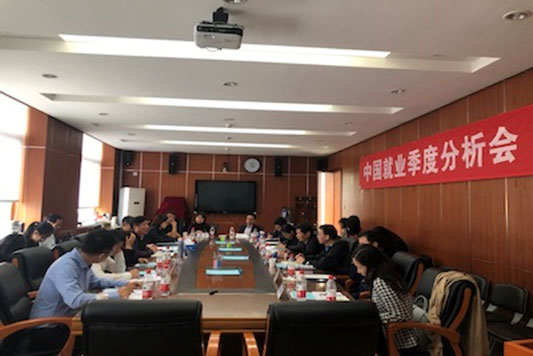
Associate Professor Geng
Lin provided a report entitled “2019 Third Quarterly Analysis of Employment
Situation—Based on Big Data of Zhaopin”. The report firstly analyzed the
overall employment situation in the third quarter of 2019, and then further
analyzed the employment situation in different industries and occupations,
different regions and cities, different enterprise scales and different
enterprise nature. The report pointed out that the CIER index in the third
quarter of 2019 showed a seasonal rebound, rising from 1.89 in the previous
quarter to 1.92 in the third quarter. Compared with the similar period last
year(1.97), it decreased. But the demand of
recruitment and the number of job applicants increased and the employment
market was more active. In the aspect of different industries, the degree of
polarization among different industries declined continually. Compared with the
previous quarter, the CIER index of the industries which with high employment
prosperity had rebounded. Among them, due to the increase of recruitment demand,
the CIER index of education/training/institutions,
pharmaceutical/bioengineering industries increased. The CIER index of
Internet/e-commerce and real estate/construction/building materials/engineering
industries increased because the demand of recruitment increased or decreased
slightly; the CIER index of the intermediary service and outsourcing service
industries decreased thanks to the increase in the number of recruitment
requests are fewer than the number of job applicants; in fund/securities/futures/investment
industries, the number of applicants decreased by 20.73% and the number of job
applicants decreased by 19.96% .Therefore, compared to last year, the CIER
index also decreased. From the third quarter of 2017, the demand of these
industries has been declining, and the contraction situation was obvious. The
occupations with higher employment market sentiment index in the third quarter
of 2019 were still technicians/operators, sales operations, cooking/food/food
research and development, education/training, etc. The CIER index of these
occupations was rising due to the increase of recruitment demand. Occupations
with low employment prosperity index were still property management, IT
management/project coordination, administrative/logistics/secretary, sales
administration/business and property management. In addition to senior
management, trust/guarantee/auction/pawn and public relations/media, the CIER
of most occupations rose. Regionally, the CIER index in the third quarter of
2019 still showed a trend of decreasing in the eastern, central, western and
northeastern regions. From the perspective of cities, the demand of recruitment
in first-tier cities in the third quarter of 2019 increased slightly, and the
CIER index declined; the demand of recruitment in new first-tier cities
increased and the CIER index increased; the demand of recruitment in second-tier
and third-tier cities also increased significantly, but the increase was
slightly less than the number of job applicants, resulting in a decline in the
CIER index. In terms of enterprise scales, the CIER index of large enterprises was
relatively high in this quarter, while the CIER index of medium, small and
micro enterprises was relatively low. In terms of the enterprises types, the
CIER indexes of enterprises of different types have rebounded from the previous
quarter. Among them, the CIER index of the private sector was the largest, and
the CIER index of the state-owned enterprises was the smallest. Because of the Trade
disputes between China and the United States, the CIER index of the wholly
foreign-owned enterprises was much lower than that of the same period of last
year. The report predicted that the CIER index (cycle component) for the fourth
quarter of 2019 would be basically the same as the third quarter, due to seasonal
factors would reach the highest value in the fourth quarter, the CIER index would
be obviously higher in the fourth quarter than the third quarter of 2019.
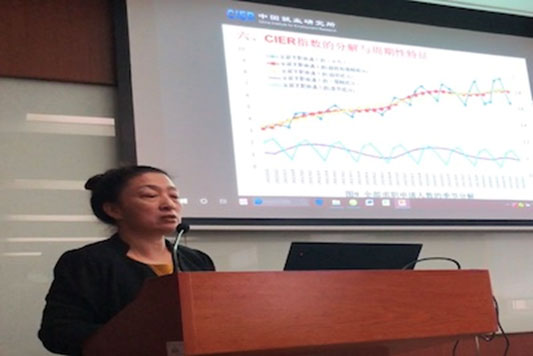
Assistant General
Manager Zhang Xiaoguang delivered a speech entitled the “Report on Human
Resources Situation in Suzhou Industrial Park in the Third Quarter of 2019".
The report mainly included the human resources index of Suzhou Industrial Park,
the characteristics of human resources in Suzhou Industrial Park in the third
quarter of 2019,and he forecasted the human resources of Suzhou Industrial Park
in the fourth quarter. The continuous development of the tertiary industry and
the transformation and upgrading of traditional industrial enterprises have
brought about a large talent gap, which has boosted the CIER index in the third
quarter. In the third quarter, the Suzhou Industrial Park's supply index fell
by 4.1% from the previous quarter. There was a heavy pressure on recruiting and
retaining people in the first-line positions and service industries and manufacturing
industries. The total matching index of human resources in the Park decreased
by 5.4% from the previous month. Because of the continuous shortage of supply,
the demand gap was generally concentrated in the tertiary industry and
high-tech industries, resulting in structural supply and demand inequality, and
there was a certain pressure on the employment of enterprises. The service
industry in the park continued to maintain a steady and rapid growth trend, and
the pulling effect of high-end service industry on employment and
entrepreneurship was obvious. Service industry continued to maintain a steady
growth trend, and the pull effect of the high level service industry on
employment was obvious. In the third quarter of 2019, the overall turnover rate
in the Suzhou Industrial Park was 11.87%, which was lower than that in the last
quarter. There was a big gap in turnover rate among different industries, and
the lowest turnover rate was in high-tech industry. From the perspective of
recruiting graduating students, the demand in the Park was mainly concentrated on
the three emerging industries, technology research and development jobs and
nanotechnology application industry. The number of graduates in this quarter was
basically the same as the previous period. The survey predicted that the
proportion of enterprises with flat employment in the fourth quarter would be
still the highest, but it has decreased compared with the previous period. The
cloud computing-related industries in the modern service industry,
nanotechnology applications and artificial intelligence industries would still
maintain a high demand for employees. It was estimated that the growth rate of
modern service industry employees would reach the highest in the fourth
quarter.

Liu Hua, Assistant Researcher
of China Institute for Employment Research (CIER), made a speech entitled
"The Employment Tendency of Graduating Students——Preliminary Analysis Based on the
Big Data of Zhaopin". The report discussed and analyzed three aspects
including data introduction, research conclusions and future research
directions. Based on the Big Data of Zhaopin, the China Institute for Employment
Research has identified the graduating students from the enterprise side and
the job seeker side, and has counted the demand of college students required by
the wide and narrow calibers. The study found that: (1) Since the first quarter
of 2016, the demand of graduating students was consistent with the trend of
national demand, but the supply trend was different. In other words, the nationwide
delivery number was on the rise, but the current college student was in a
downward trend; (2) The changes in the CIER index of the third quarter in 2019 of
graduating students in different industries, occupations, regions, cities,
enterprise scales and corporate nature were generally similar to the national
results, but different in the specific values of the CIER index in demand. In
addition, the report also pointed out that, in the future, the corresponding
trends in the supply and demand of graduating students, the identification of
industry needs in Zhaopin, and the supply of unemployed people and incumbents would
be further analyzed.

Tai Qiuqing, Senior Project
Manager of Boston Consulting Group, gave a report titled "The Future of
Digital Economy Employment". The report provided a brief analysis and
forecasted employment patterns in China in the next 15-20 years. The main
contents include: the scale of the digital economy, the impact of the digital
economy on the entire employment market, the labor force in the digital
economy. The report indicated that the scale of the digital economy would
continue to expand over time, and was expected to reach 16 trillion in 2035,
accounting for 48% of GDP, which contained 416 million employees. At the same
time, with the deep influence of digital technology on business logic,
organizational form, labor capacity and values, the employment of different
positions in China would change significantly in the future. The positions
closely related to digital technology would continue to increase and strengthen,
and the demand for multi-talents would continue to rise. And by the significant
influence of digital technology on the substitutability of human labor, some
jobs with repetitive, operational, process and manual labor as the main work
content would continue to be weakened or even disappeared in the job market.
From the perspective of working mode, the online platform would absorb a large
number of labor in the traditional industry, and the growth rate of service providers
shared economy in China was expected to be 11.8%. From a global comparative
perspective, we could see that, the number of odd-job-worker in China who
viewed their income from these works as the main source of income accounted for
12% in 2018, while in the United States, Britain, and Japan, it accounted for
only 4%, 3%, and 2%; the number of odd-job-worker in China who viewed their
income from these works as the subordinate source of income, compared with 10%
in the US, 7% in the UK, and 5% in Japan, it reached 33% in China. Low-skilled
and high-skilled workers were in high demand. Among them, low-skilled workers could
only undertake low-skilled and low-income jobs to maintain their livelihood due
to lack of resources such as technology, knowledge and relationships. High-skilled
workers could separate from the original organization or institutions to gain
the independent access of business opportunities. High-skilled jobs such as
software development and management became important services for freelancers, accounting
for up to 31%, followed by personal services including care (17%) and
housekeeping service (16%). The “digital aborigines” represented by the
post-90s and 00s would have different working values in the digital economy.
They were self-driven, interest-oriented and capable of accepting new things.
According to the survey, the percentage of 90s who wanted to grow up at work was
as high as 81%, and those who believe that realize the meaning of life at work was
more important accounted for 62%, and 73% of respondents agreed that “open
freedom, relatively relaxed” was an ideal corporate culture. Finally, the
report deeply analyzed the situation in four industries which were most
affected by the digital economy, namely the new retail industry, the pan-entertainment
industry, the new finance industry and the new manufacturing industry.
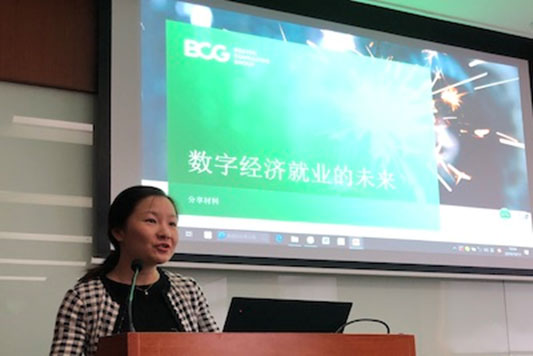
During the keynote speech and the
discussion section, the experts and leaders from government conducted the
extensive and in-depth discussions on the third quarterly employment situations
and the future development trends. Yin Jiankun, Deputy Director-General of
Employment Promotion Department, Ministry of Human Resources and Social
Security and Meng Canwen, Deputy Director-General of Department of Population
and Employment Statistics, both made the excellent comments and analyzed the reports
Wang Yixin, Executive
Director of Public Relations of Zhaopin, shared the big data on job hunting
competition in the third quarter. The overall competition was more intense than
it in thelast year. Among them, the competition in the emerging industries
represented by computer software, online games and IT services continued to
increase. Affected by the development plan of the Guangdong, Hong Kong and
Macao Bay Area, the talents’ attraction in
Guangdong, Hong Kong and Macao had been significantly improved and the flow of
talents had been significantly enhanced. Among all the cities that flow into
the Bay Area, Beijing had the highest proportion of talent inflows, followed by
Shanghai, Changsha, Wuhan, and Chengdu. Among all the talents that flow into
the Bay Area, the influx of talented people with older ages has increased, and
the flow of young people has decreased. In addition, Zhaopin made a brief
analysis of the education and training industry. Director Wang Yixin pointed
out that the demand of the education and training industry had been increasing
and the supply had continued to be in a low level, and the shortage of staff was
large. From the perspective of the CIER index, it has remained above 4 since
the first quarter of 2018, and employment prospects were good. However, the
core post had a significant increase in the academic qualifications about
talents and the overall salary level was low. The average salary of the
education and training industry in the first half of this year was 7,900 yuan,which
lower than the national salary(8,400 yuan). Therefore, if the talent gap was to
be filled, the overall salary of the education and training industry would need
to be further improved.
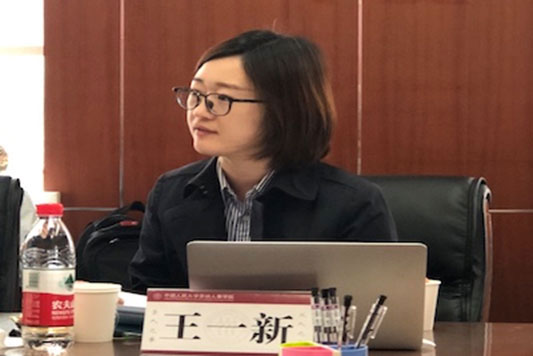
Weng Hang, Senior Researcher of Tencent, put forward
the idea using geographic information to observe the labor and employment
market in the future and explained the changes and characteristics of Tencent's
employment pattern in the digital economy era, and the number of jobs and
employment income that could be created by Tencent.

Zhang Dongzheng,
Director of Department of Strategic Data Analysis in 58.com, introduced the
operational system and organizational structure after revolutionary. Li Yan,
Dean of Recruitment Data Institute in 58.com, added that the major data in
58.com which reflected the recruitment demand of the manufacturing industry had
declined slightly in the third quarter, and the demand for recruitment in the
wholesale and catering sectors increased slightly. Affected by national
regulatory policies, the demand in the cultural and sports industry had
declined. The data from Recruitment Research Institute in 58.com and targeted
research found that more and more college students chose to enter the factory
and worked in the operation post; while the first-line blue-collar workers were
more inclined to enter the office work. 58.com would continue to explore the
dominant factors behind these two phenomena.
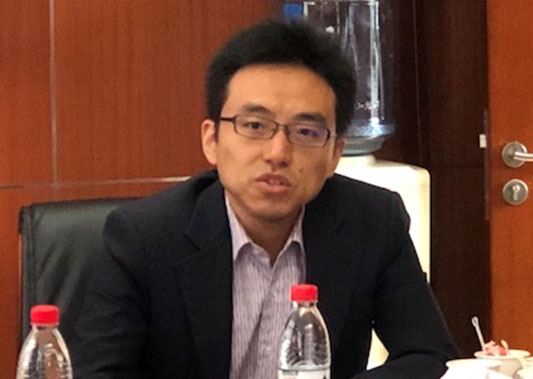
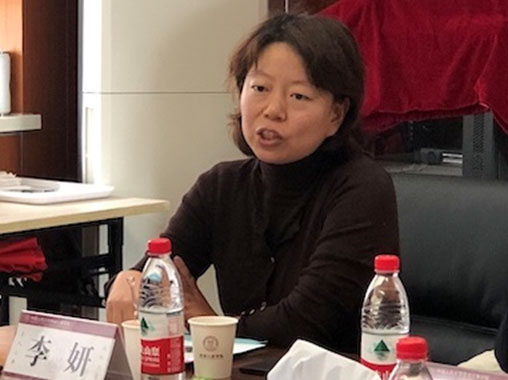
Bao
Jinglin, Director of 51haohuo.com, introduced that the company had established
a high talent sharing base in Shanghai in the third quarter, and had established
a science and technology base in some provinces to help human resources in the
poverty-stricken counties to start their own businesses.In October, the
government would issue the first platform economic individual business license
through 51haohuo.com, which was the contribution to commercial innovation by 51haohuo.com.
|